A Guide to Rug Buying
Posted On November 4, 2019
Shopping for the perfect rug for your home and your family can be both fun and daunting. The tradition of rug making dates back to 3,000 years ago. Thus, purchasing a handmade rug today is like purchasing a piece of history. A finely crafted carpet becomes an instant family heirloom. Here are some points and tips to keep in mind when shopping for your own perfect piece.
Contents
What to Consider When Buying a Hand Crafted Rug
One of the first important aspects of rug buying is to find a retailer that you trust. An ethical dealer will provide you with helpful information and a variety of options, rather than bullying you into purchasing something for their gain even if it is not what you wanted. The best rug dealers are passionate about the industry and will educate you throughout the process. Ethical dealers will also not sell items that were made using suspicious conditions or child labor. It is important to trust your instincts when looking for a quality carpet- if you do not like the vibe a certain dealer gives off, then it is best to keep it moving.
No Child Labor
Buy pieces that are made by adult artisans when looking at handmade rugs. The cheaper versions from India, Nepal, and Afghanistan are made by child labor more often than not. It is important to sacrifice a cheaper price and support the ethical, legitimate rug-making industry.
Quality
A good quality handmade rug will lay flat and straight on the floor, despite the naturally occurring irregularities. Imperfections in the weave are unavoidable in regards to the nature of handmade carpets, but the shape of an authentic rug should be reasonably regular. Handmade types also have a sophistication about them which speaks to the traditional craftsmanship and artisan’s skills.
Authentic handmade rugs use lustrous wool or other natural fibers, with balanced colors that are neither bleeding or faded. The colors are not “washed out,” and they do not have an unnaturally harsh or shiny finish. See our article on how to identify an authentic design here.
Select The Right Weave
Selecting a weave type comes down to your realistic budget between hand-knotted, hand-tufted, or flat-weave. Here is a brief look at some of the many different weaving styles that have been used in rug making in different parts of the world.
Hand Knotted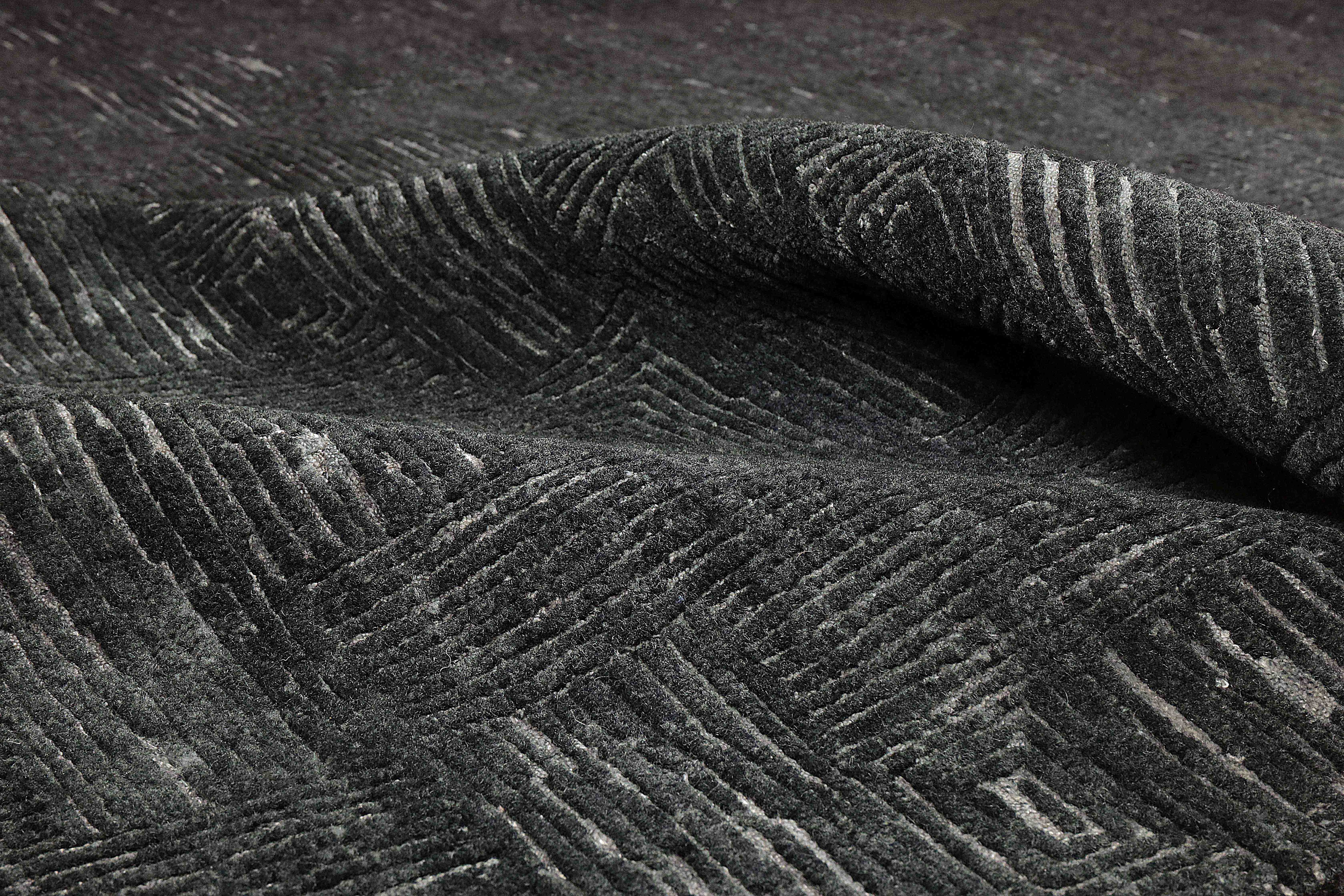
Also known as pile weaving, hand knotting is easily the most time consuming rug making technique. This style involves hand-tying knots to the warp threads, with each row of knots held in place by a row of weft threads. It takes a talented weaver roughly 10 seconds to tie each knot, and because most hand knotted rugs use between 25 and 1,000 knots per square inch, it can take years to make one in this way. Hand knotted rugs are extremely durable, comfortable, and considered to be the highest quality you can buy; however, they are also understandably expensive.
Hand Hooked
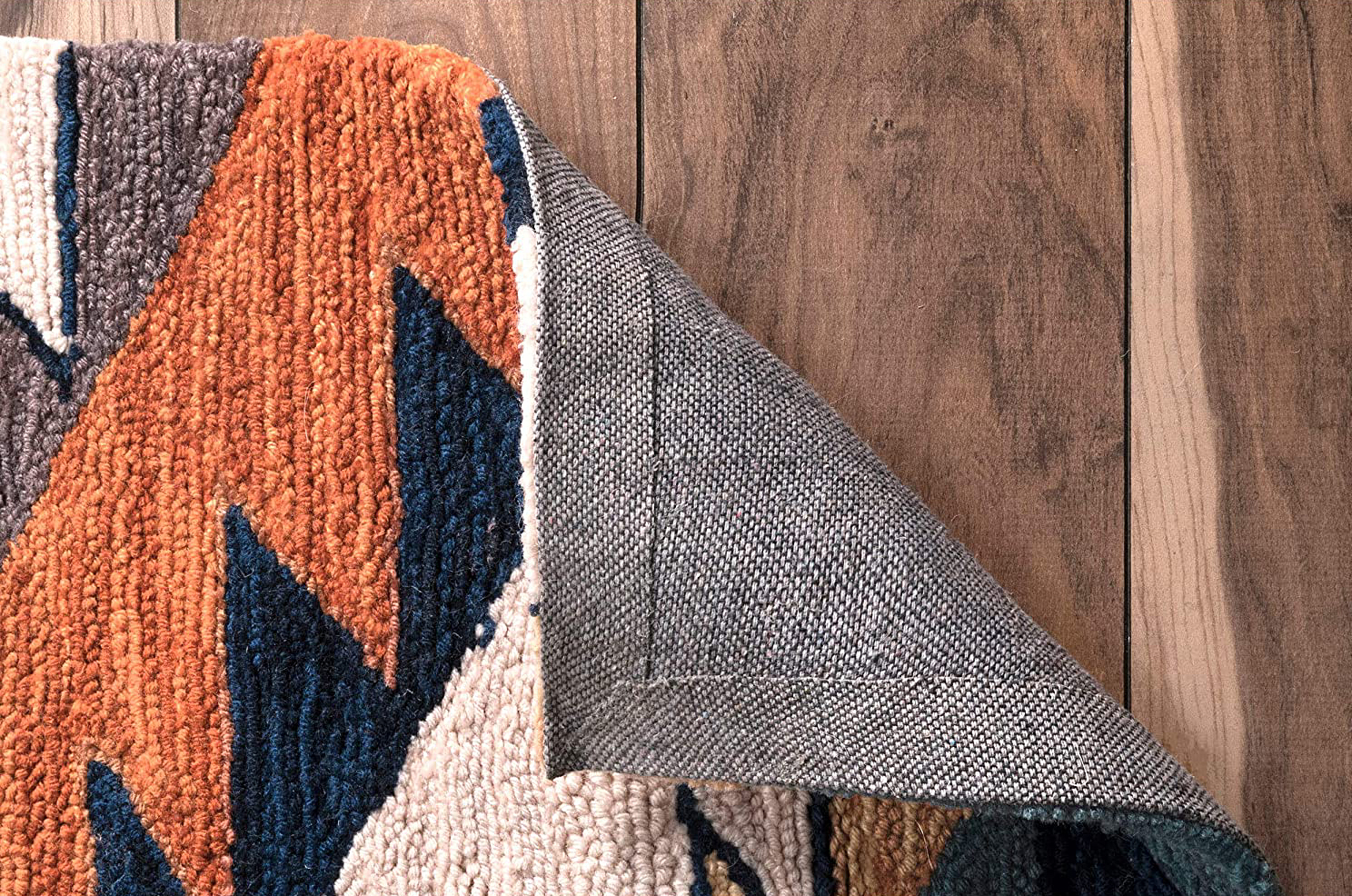
If you are looking for a rug with a plush pile, hand hooked weaves are an excellent option. This unique method involves stretching a piece of canvas over a frame, then, working from the back, using a needle to push yarn through the canvas before pulling it back through. This creates a loop on the rug’s surface and the longer the loop, the higher the rug’s pile will be. Once it’s woven, it is removed from the frame and a latex backing is attached to keep the loops in place. A fine mesh is then added to the latex backing in order to protect your flooring.
Hand Tufted
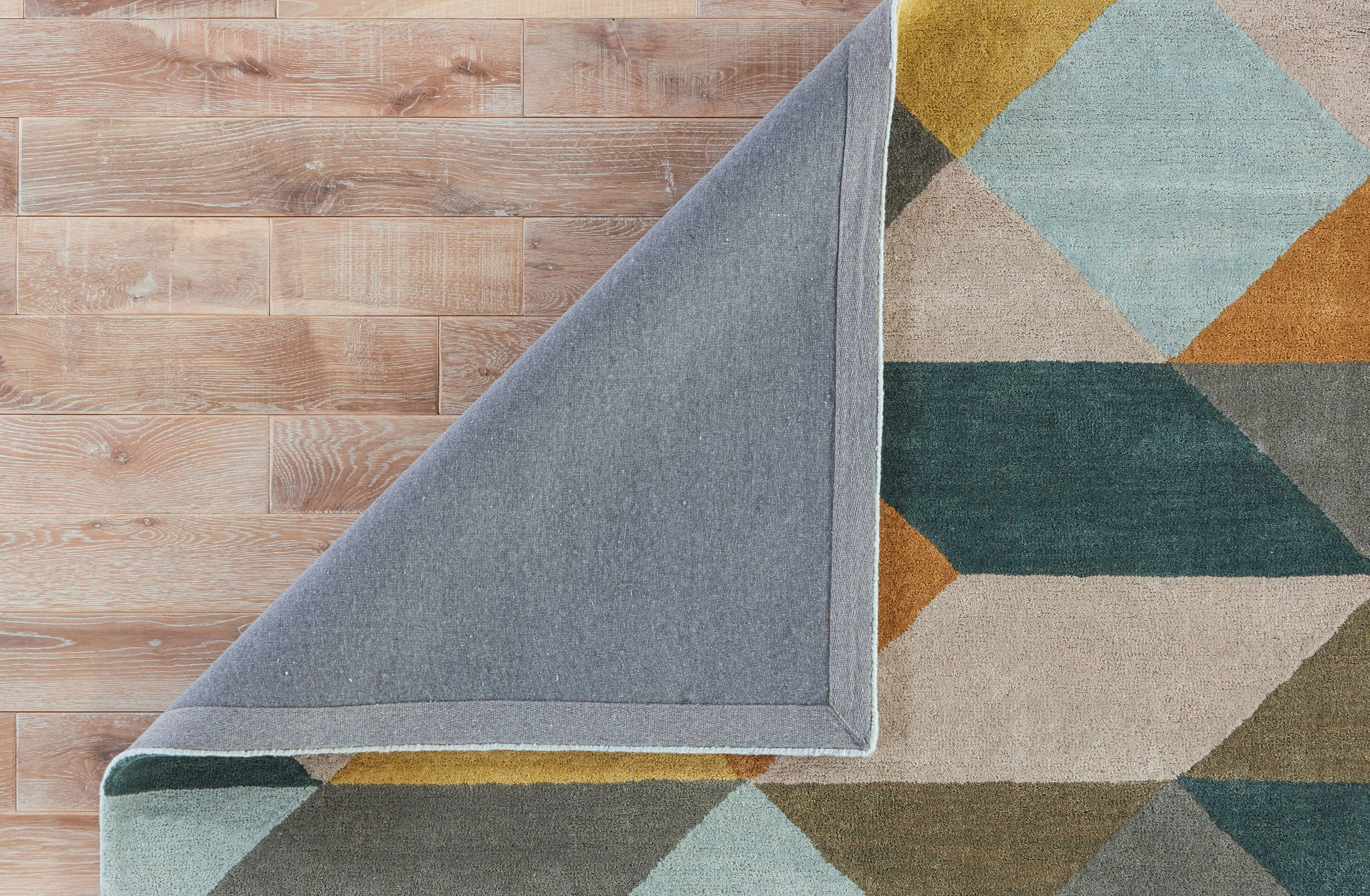
This style of weaving is in many ways similar to the hand hooking technique and involves weaving yarn through a canvas that is stretched on a loom and creating loops on the surface of the rug. Once the rug has been woven, a backing piece is attached in order to keep the threads glued in place. What makes hand tufted carpets unique is that the pile is then shorn, creating a smooth, carpet-like surface. While this style is extremely comfortable, the cutting of the rug’s pile leaves the threads vulnerable to being pulled out. As a result, you will need to vacuum a hand-tufted rug more often than most others.
Flat Woven
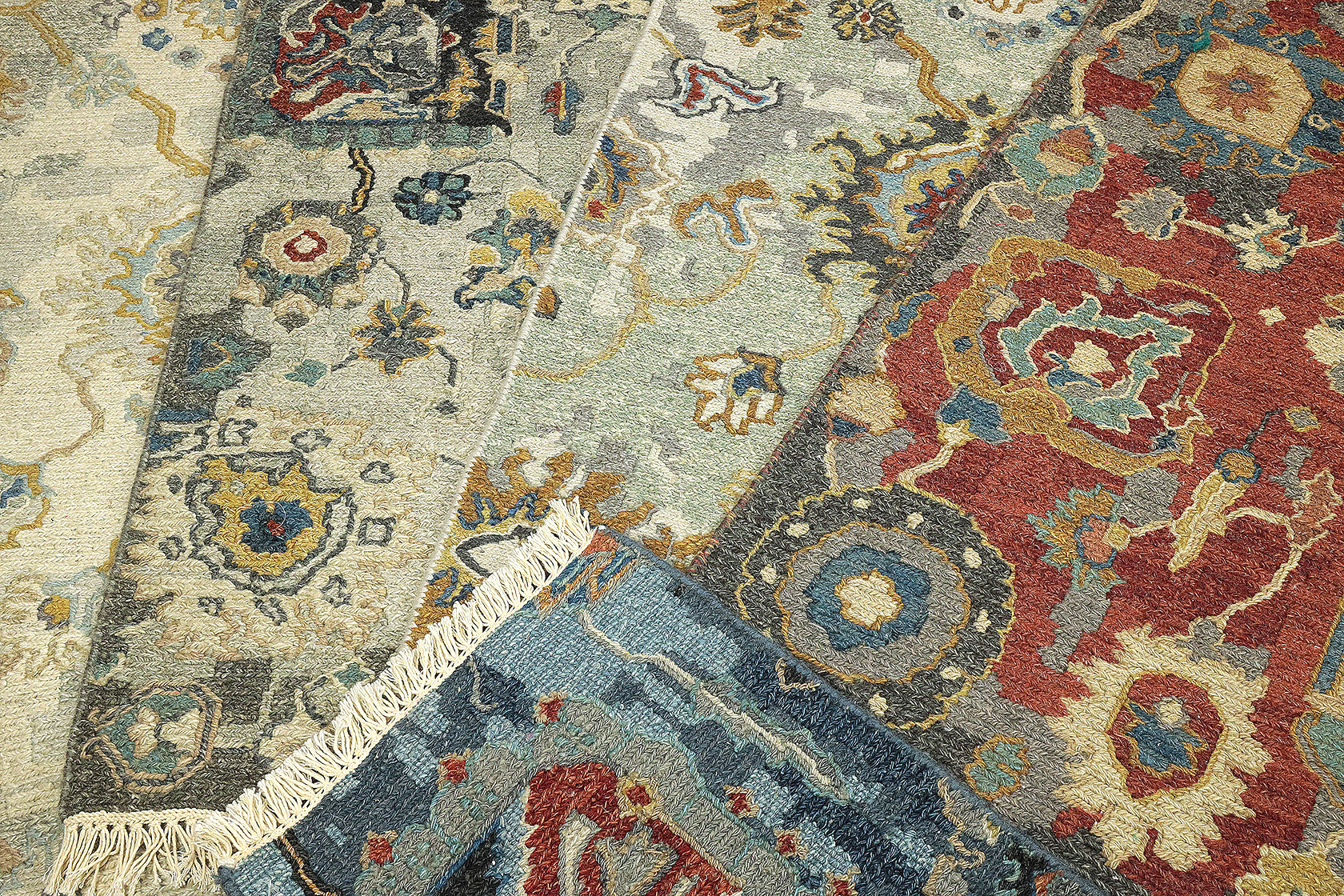
This style of rug making uses a loom to create flat rugs without a pile and has long been popular throughout the Middle East. It involves using the vertical warp threads as the foundation and weaving the horizontal weft threads through it, which adds to the foundation while creating the pattern. Compared to hand hooked and hand knotted rugs, flat woven rugs are quick to make. For this reason, they are relatively inexpensive by comparison, and they can be made in a wide variety of materials, such as wool, bamboo, cotton, and nylon. An added bonus of this style of rug is that it is reversible, so you can simply flip your rug for a slightly different look.
Shags
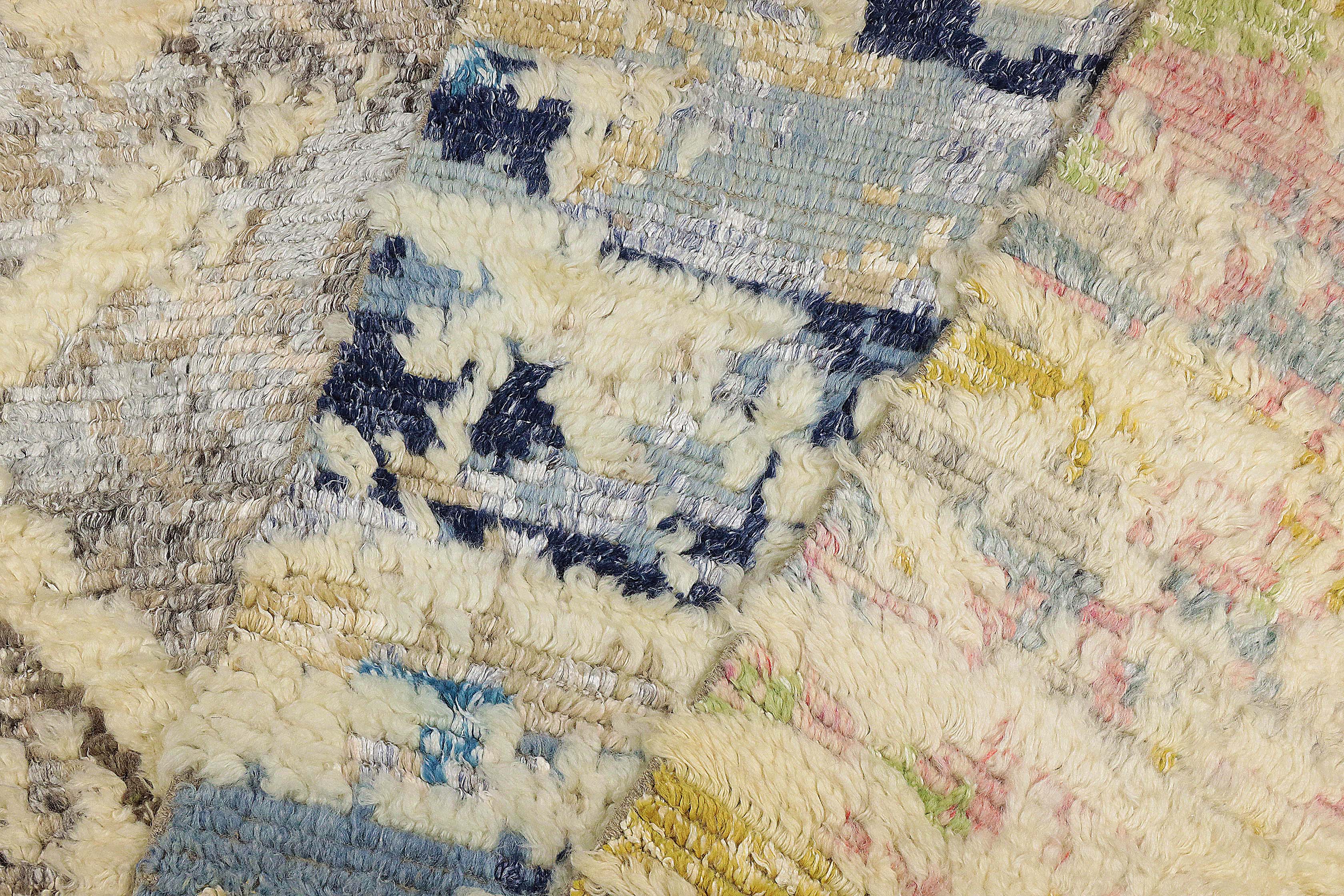
The Ancient Greeks were the first to use this style of weaving and did so in creating what they called Flokati rugs. Flokatis were made from sheep’s wool that was carded and spun, then woven through a canvas to create long loops on its surface that were then individually cut. The rug would then be washed for hours in the cold water of a waterfall, making the wool extremely soft. In the 1970s, machine made imitations of flokatis became extremely popular in North America and were known simply as shag rugs. While shag rugs are far less expensive than a genuine flokati they also won’t last anywhere near as long.
Braided
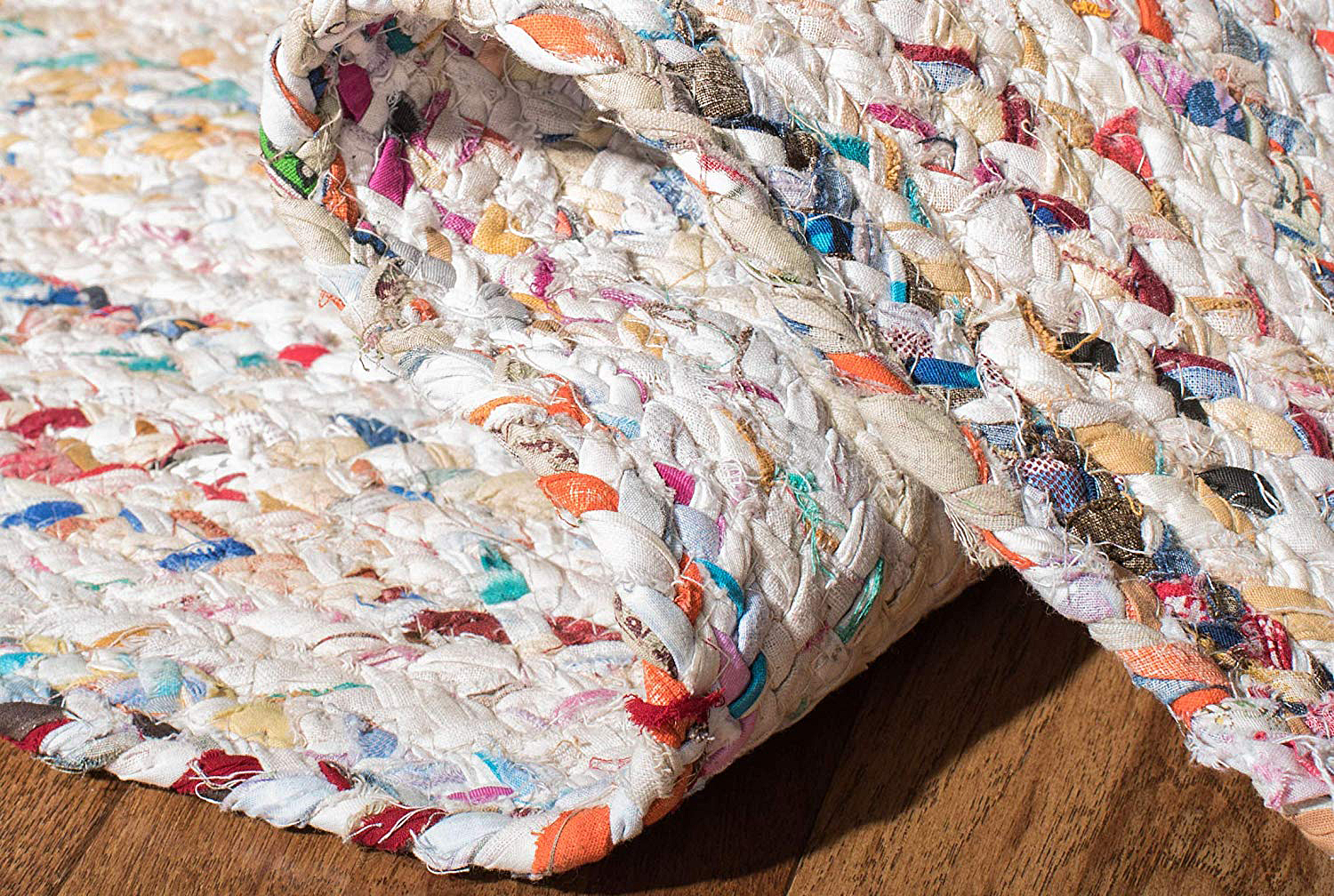
Made popular by early American settlers, the braided style involves creating a long, continuous braid that is sewn together into a spiral. These braids were originally constructed from worn out clothing or linen; however, these days you can get braided rugs made from almost any material. This simple technique makes extremely durable and attractive rugs and has enjoyed an increase in popularity of late.
Machine Made
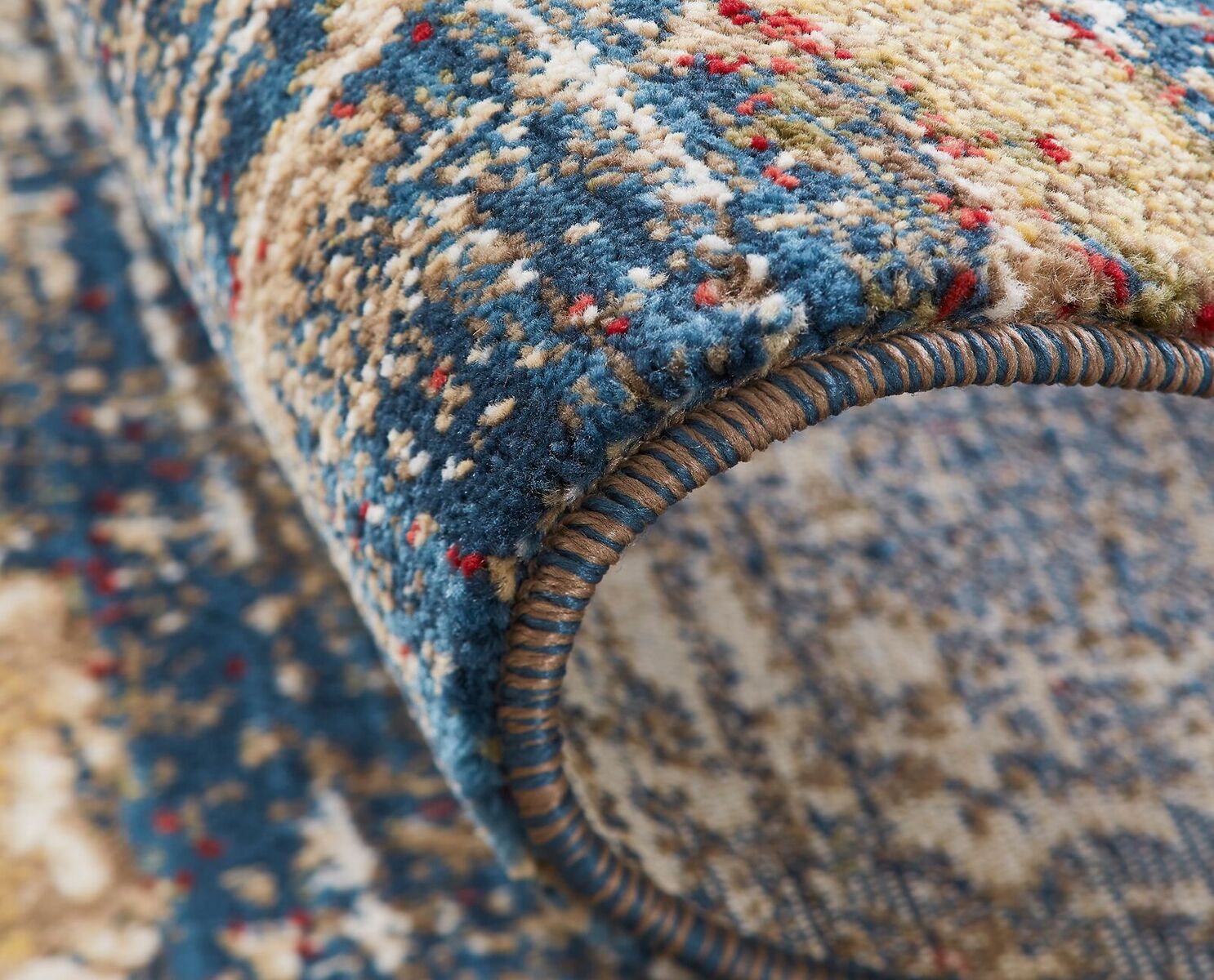
This style of weaving involves making rugs on large ‘power-looms’ and has become increasingly popular in recent years. There is very little labor involved which makes machine made rugs relatively inexpensive, and they can be made of almost any material. These rugs also come in endless shapes, sizes and patterns, making them perfect for modern interior design; however, the major downside of machine made rugs is that they are far less durable than those that are handmade.
Coloring
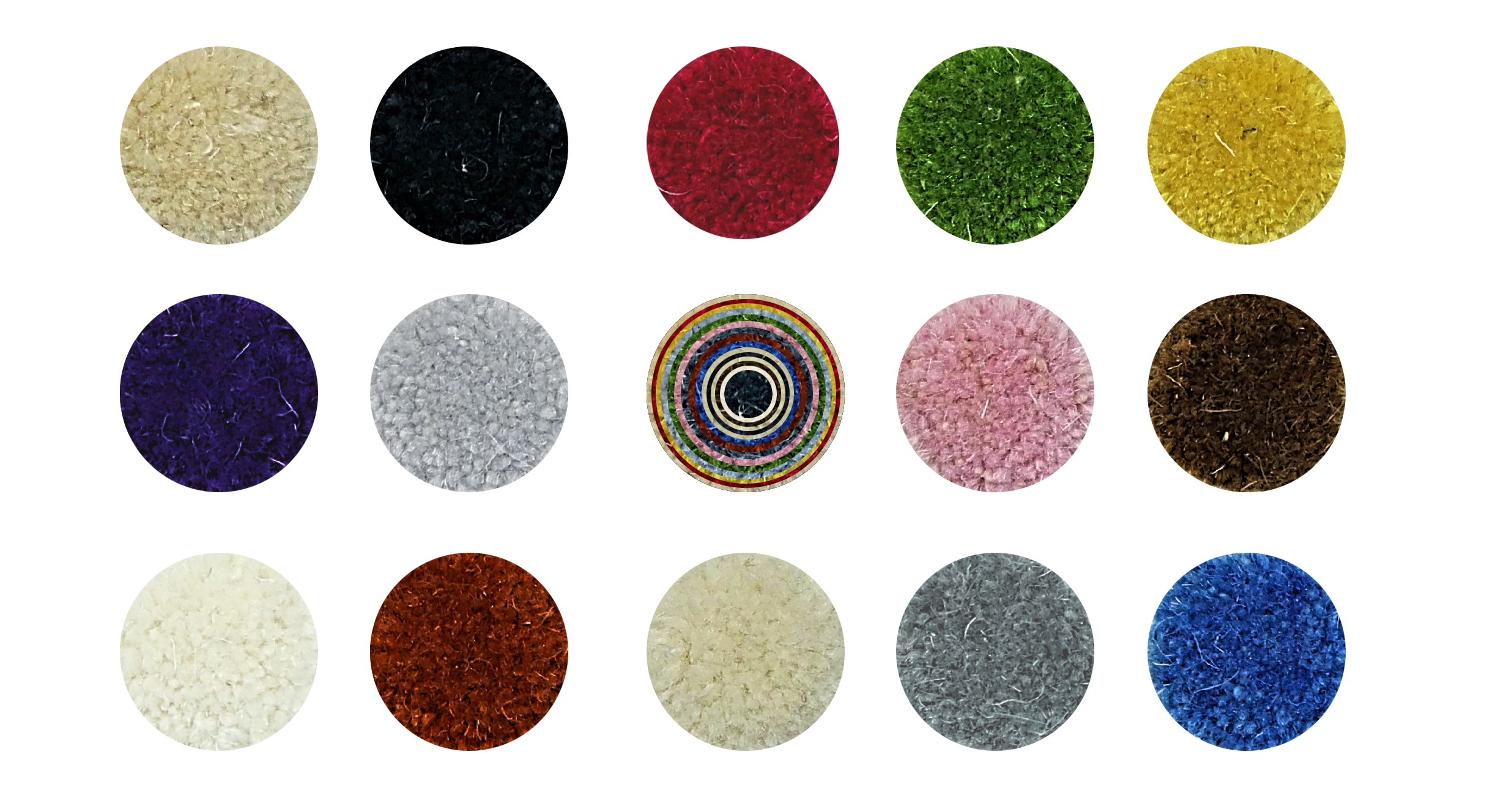
Choosing between synthetic and natural dyes also comes down to personal preference, as there are pros and cons to both. Synthetic dyes that are commonly used today are available in a huge variety of beautiful, bright colors. Natural dyes are preferred by rug connoisseurs and collectors for their authenticity, but synthetic dyes do retain their color over time more effectively. Natural dyes are used in the process of hand making rugs, and they generally add around 30% to the overall cost. However, the quality and pleasant variation in color patterns make them more desirable.
Style
The right style can totally transform a space, adding warmth, color, cohesion, and class. Choosing the perfect rug for your space takes careful consideration; so take some time and get to know a few of the more popular styles.
Contemporary
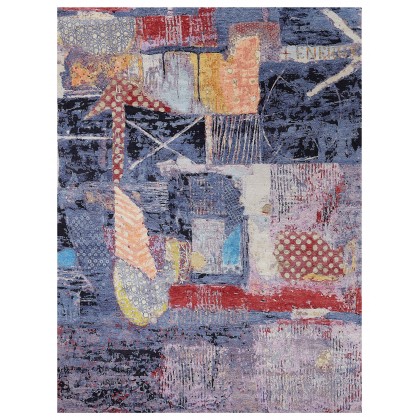
Just as with any other contemporary art form, when it comes to modern area rugs anything goes. Modern designs showcase trendy patterns, utilize a variety of materials and come in a huge range of colors, providing many fantastic ways to compliment any modern interior. Unlike most other styles, modern rugs also come in a wide assortment of shapes. Many modern rugs are machine made, but there is a new generation of handmade carpets, mostly made in India and Nepal, that are gaining great popularity among interior designers and industry insiders.
Traditional
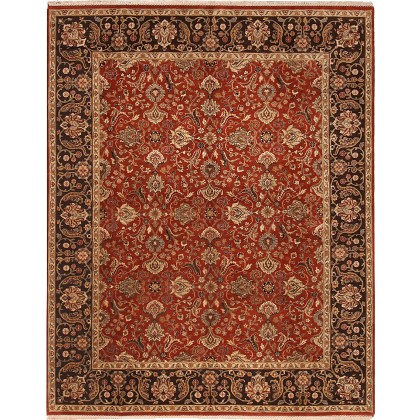
For those looking to invest in a timeless masterpiece, a handmade traditional area rug could be your best option. Traditional oriental pieces are hand woven using natural materials, usually wool and/or silk, and have incredibly intricate designs that have been perfected over generations. Traditional rugs are extremely durable and if you look after them they will easily outlast any other style of rug; however, they are best kept out of direct sunlight and away from high traffic areas. Traditional Persian design motifs include: Boteh, Gul, Herati, Mina-Khani, Rosette, Shah Abbasi, Azari Kharchang and Islimi Floral. It is not unusual for more than one design motif to be used in a single rug. Some of the highest quality traditional rugs are those made in Iran, Turkey, China, India, and Pakistan.
Transitional
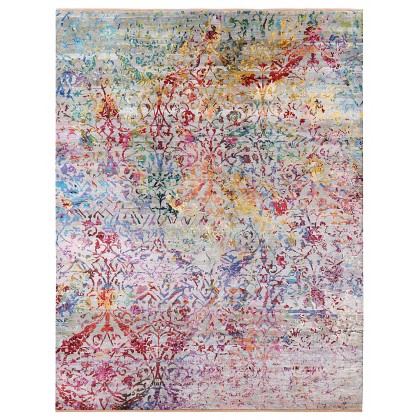
Transitional rugs strike a wonderful balance between a modern and traditional style; utilizing traditional themes while embracing a modern simplistic approach. This makes them extremely versatile, able to enhance both modern and more traditional interiors. This style is generally calm rather than bold and combines neutral base colors with relatively soft and subtle accents. Handmade transitional rugs are often exported from the major rug making centers of the world, such as India and Nepal.
Tribal
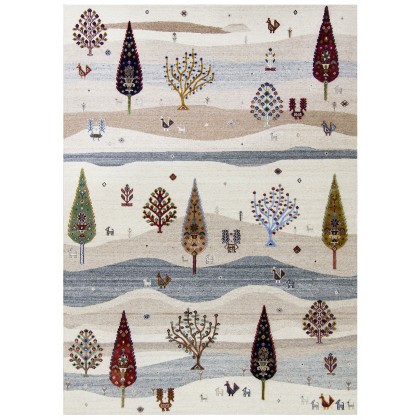
For thousands of years small tribes all over the world have been producing their own handmade rugs, often on small portable looms. While these rugs may not be as large, polished or sophisticated as traditional rugs, they are always extremely vibrant, colorful and absolutely unique. Among those best known for making tribal rugs are the peoples of Morocco, the Atlas Mountains, the Balkans, and the Caucasus region. Modern weavers incorporate the freestyle geometric patterns of tribal rugs, making them more widely available. So if you are looking to invest in a beautiful and mysterious rug with a great story behind its creation, tribal styles offer a fantastic option.
Southwestern
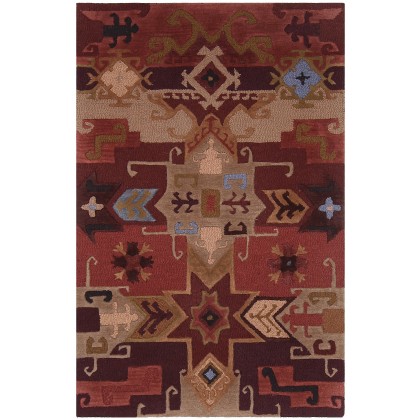
Rugs of this style tend to appear a little more rustic and are often associated with the interior look and feel of log cabins. The most iconic southwestern rugs are animal skins and hides; however, they can also be simply woven, with Native American or Western designs. Truly authentic Southwestern rugs are handmade from natural materials; however, these days inexpensive machine made versions are also extremely common.
Arts & Crafts
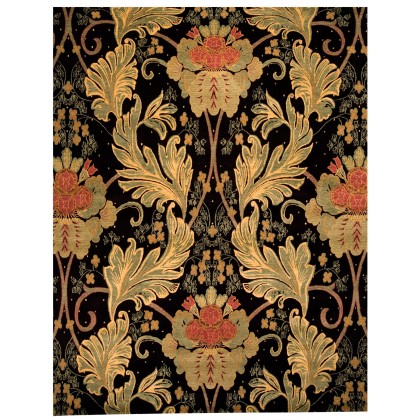
The Arts and Crafts movement began in the late 19th Century as a reaction to the overly fancy designs of the Victorian Era. Rugs of this style are bold yet simple and focused on quality craftsmanship; their designs and colors inspired by all things natural, from willow trees and mosses to gemstones. To be considered authentic, an Arts and Crafts piece must be constructed of natural materials and based on the designs of pioneers such as William Morris, C.F.A. Voysey or Dard Hunter.
Rug Size
First ask yourself: what purpose will this rug serve? Will it be a focal point — the center of attraction? Or will it unify the room’s decor elements to create a subtle and tranquil atmosphere? Do you want to unify the room with one large rug? Or break it into small spaces with several smaller rugs?
Living Rooms
In most living rooms, interior designers will usually recommend getting the largest area rug you can afford. A rug that’s too small for the space will create a pinched, naked feeling that will make visitors painfully conscious of the lonely little rug in the center. Of course, you want to leave some border of bare floor, but the room will look its best if the furniture is partly on the rug and partly off. This will bring flow and continuity to the space. The right one will be the “glue” that unifies all the design elements in the room.
With a really large living room rug, leave some floor showing around the borders, and arrange the furniture so it is well inside the perimeter, rather than hovering on the outer borders.
Cabinets and sideboards are best left completely off, with some bare floor visible.
Dining Rooms
A large rug under the dining room table makes the room warmer, more colorful, and deadens the sound. It’s best if the rug is in the same proportions as the table and extends at least 1.5 feet out from the table on all sides. This allows room to pull the chairs out without them coming off the rug. Remember, the center of the dining room rug will be hidden under the table, so it’s the borders that will be seen.
Bedrooms
In a bedroom, it’s best to place the rug underneath the bed, framing it but not extending under the side tables. This ensures that you will step on a nice warm rug, and not cold floor, upon getting out of bed.
Another option is to have two small pieces, one on either side of the bed.
Hallways
For a hallway, we recommend that you order a custom piece, which we can create in the precise dimensions needed, however it’s possible we may have a runner in stock that will work for your space. Just ask us.
Staircases and Wall-to-Wall Carpets
Hand-knotted rugs can be used as wall-to-wall carpet and staircase runners with careful planning. These should only be installed by an expert carpet fitter. When doing this, it’s important that you order the rug slightly larger than the space – up to 200mm (8″) extra in each direction to allow for the fitting. If you are considering using a handmade rug as a wall-to-wall carpet, contact us for a consultation.
Fitting Into a Well or Alcove in the Room
If your rug is to be fitted into a small alcove in the floor plan, it will have to be larger in each direction, then trimmed to fit the space. It is very important to consider how the pattern will be cropped. Please contact us for further information.
Get your Handmade Rugs from a Local Dealer
Visit Cyrus Artisan Rugs Showrooms in: Minneapolis, St. Paul, & Rochester, not living in Minnesota? visit our showrooms in Sioux Falls SD & Des Moines, IA to get your quality handmade rugs.
